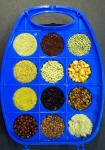India's Current Account Deficit (CAD) for 2012-13 is likely to be around 5 per cent of the GDP, Prime Minister's Economic Advisory Council (PMEAC) Chairman C Rangarajan said on Monday.
 "I think we need to wait for a little more data to come in, but I think it (CAD) could be around 5 per cent of GDP this fiscal year," Rangarajan told reporters on the sidelines of an event here.
"I think we need to wait for a little more data to come in, but I think it (CAD) could be around 5 per cent of GDP this fiscal year," Rangarajan told reporters on the sidelines of an event here.
CAD, which represents the difference between inflows and outflows of foreign currency, had touched a record high of 5.4 per cent of GDP in the July-September quarter.
Rangarajan said CAD is likely to come down in the fourth quarter of the current fiscal, ending March 31, on the back of improvement in exports in the last few months.
"Perhaps the third quarter current account deficit will be higher but it could come down in the fourth quarter. Because exports have shown some sign of improvement in the last few months," he said.
India's trade deficit has fallen to 10-month low of $14.9 billion in February on improving exports and a sharp drop in imports.
PMEAC Chairman expressed the hope that the capital flows would be adequate to cover the CAD.
"There could be periods in which there could be mismatches in capital flows...but for the year as a whole, capital flows would be adequate. I do believe that the capital flows next year would be adequate to cover the current account deficit," Rangarajan said.
Asked whether RBI should cut key interest rates in the next policy review, Rangarajan said: "It all depends upon how inflation behaves. If inflation, more particularly non-food manufacturing inflation continues to remain below 4 per cent, then I think there is room for RBI to continue to act."
The Central Bank on March 19 had reduced the indicative policy rate (repo rate) by 25 basis points, from 7.75 per cent to 7.50 per cent. Repo is the rate at which banks borrow short -term funds from the central bank.











 © 2025
© 2025